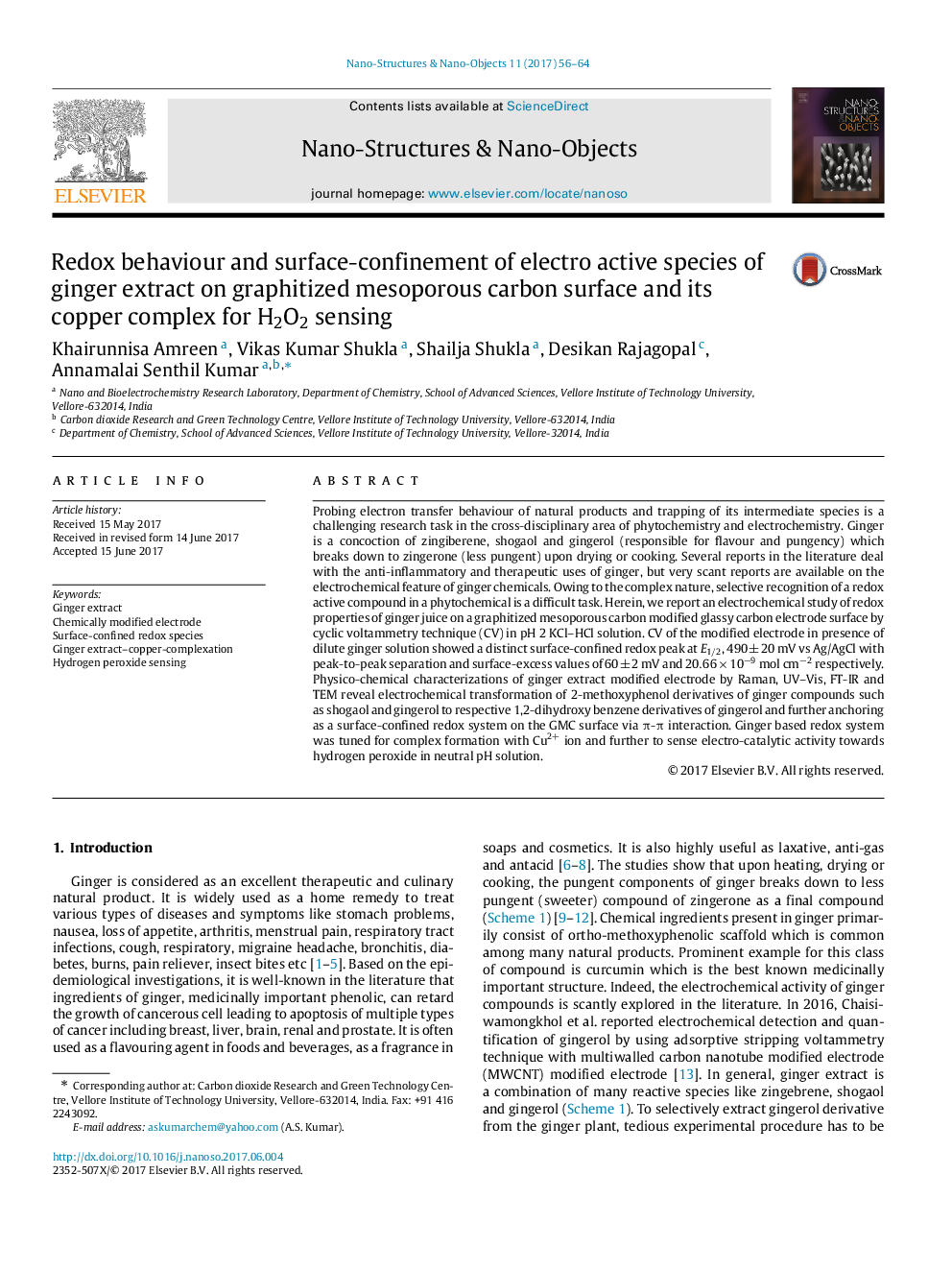| Article ID | Journal | Published Year | Pages | File Type |
|---|---|---|---|---|
| 5153856 | Nano-Structures & Nano-Objects | 2017 | 9 Pages |
Abstract
Probing electron transfer behaviour of natural products and trapping of its intermediate species is a challenging research task in the cross-disciplinary area of phytochemistry and electrochemistry. Ginger is a concoction of zingiberene, shogaol and gingerol (responsible for flavour and pungency) which breaks down to zingerone (less pungent) upon drying or cooking. Several reports in the literature deal with the anti-inflammatory and therapeutic uses of ginger, but very scant reports are available on the electrochemical feature of ginger chemicals. Owing to the complex nature, selective recognition of a redox active compound in a phytochemical is a difficult task. Herein, we report an electrochemical study of redox properties of ginger juice on a graphitized mesoporous carbon modified glassy carbon electrode surface by cyclic voltammetry technique (CV) in pH 2 KCl-HCl solution. CV of the modified electrode in presence of dilute ginger solution showed a distinct surface-confined redox peak at E1â2, 490±20 mV vs Ag/AgCl with peak-to-peak separation and surface-excess values of 60±2 mV and 20.66Ã10â9molcmâ2 respectively. Physico-chemical characterizations of ginger extract modified electrode by Raman, UV-Vis, FT-IR and TEM reveal electrochemical transformation of 2-methoxyphenol derivatives of ginger compounds such as shogaol and gingerol to respective 1,2-dihydroxy benzene derivatives of gingerol and further anchoring as a surface-confined redox system on the GMC surface via Ï-Ï interaction. Ginger based redox system was tuned for complex formation with Cu2+ ion and further to sense electro-catalytic activity towards hydrogen peroxide in neutral pH solution.
Related Topics
Physical Sciences and Engineering
Chemistry
Inorganic Chemistry
Authors
Khairunnisa Amreen, Vikas Kumar Shukla, Shailja Shukla, Desikan Rajagopal, Annamalai Senthil Kumar,
